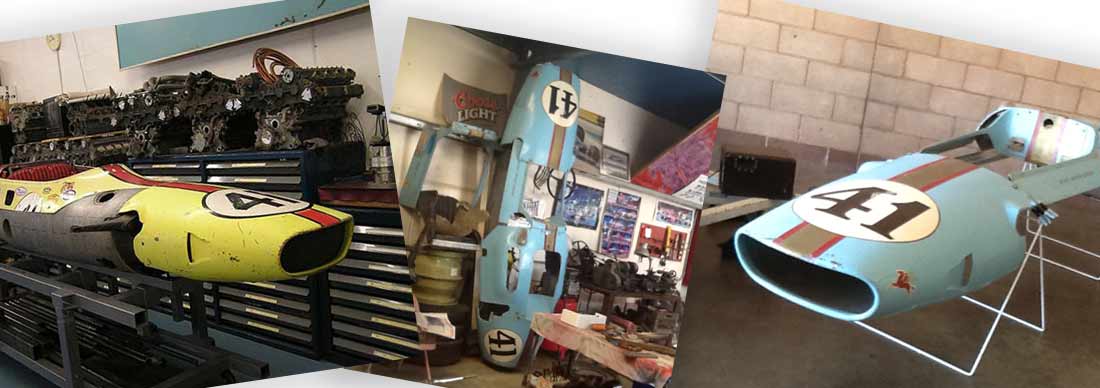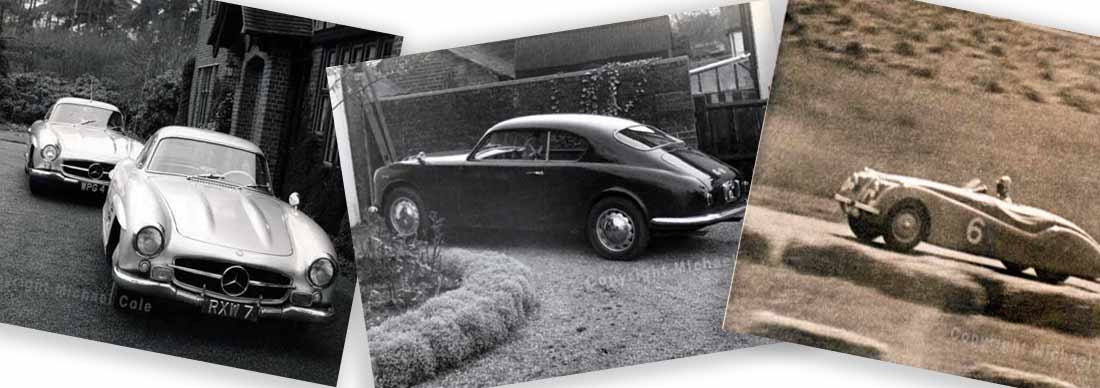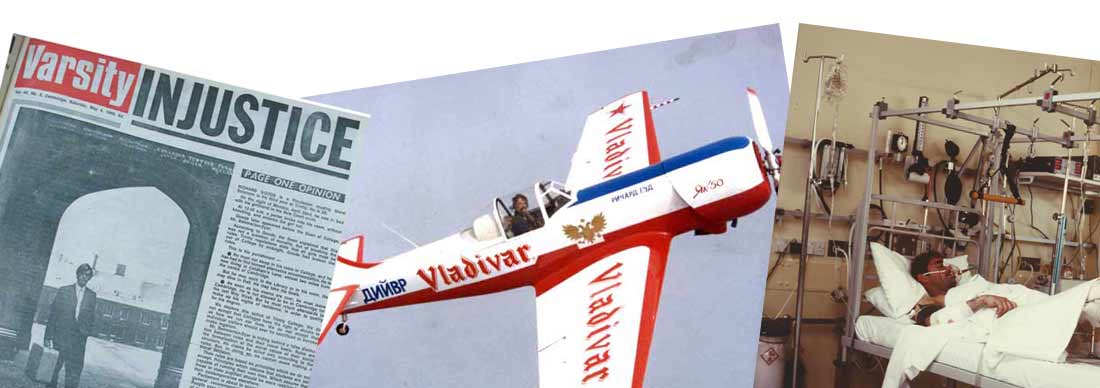
BRP's Indianapolis Swan Song - Part 6
By Ian Wagstaff
We return to what now remained of the two BRP Indy cars. The colourful Carroll Horton, who had been a mechanic on Bobby Marshmann’s Lotus at the 500 in 1964 and on Al Miller’s similar car a year later, travelled from Indianapolis to Howard Gilbert’s raceshop to purchase what was now left of the two cars and their parts. It had been intended that one of the tubs should be used in the construction of a new car from Al-Craft Industries in Troy, Michigan. This never happened and later it was dumped outside to free up workshop space. Eventually, the tub was acquired by Martin Powers who had mistaken it for a Lotus; he sold it on to Walter Goodwin of Race Cars Restorations in Indianapolis who recognised it for what it really was, thanks to a United States Auto Club (USAC) number stamped on the tub. Meanwhile, the remains of the other car plus various parts remained in the loft at Carroll Horton’s business.
Now someone who must be regarded as a saviour of the BRP Indy cars, Thomas Acker of Largo, Florida, comes into the story. In 1984 he purchased five complete Indy cars from Horton as well as seven, dyno-time only Ford engines and all the BRP parts. Three years later, he was contacted by Goodwin, who informed him that he owned the other tub. This Acker duly purchased to bring the BRPs back together for restoration. In 1992 a tornado that swept through his shop threatened to destroy everything but thankfully the parts were undamaged.

Above: A tub with 1966/67 bodywork came into Thomas Acker’s possession. (Courtesy Thomas Acker)
Acker visited the then 84-year old Howard Gilbert in 2004 and spoke to Joe Bogosian, who had been on Gilbert’s team in 1966 and 1967, in search of advice. He also consulted George Woodward and purchased some technical drawings from him. Furthermore, he got in touch with Tony Robinson and Ken Gregory but was unable to agree a price for the blueprints.

Above & below: Steve Bonesteel tried to restore one of the cars on a very limited budget. (Courtesy Steve Bonesteel)

Five years later, Aubrey Green agreed to produce a set of new skins for one of the tubs. Unfortunately, because of a heart problem, Acker’s cardiologist advised him, as he put it, ‘Not to take on any long term projects,’ and what remained of the BRPs went to a major racecar collector Thomas Malloy. In effect, what Malloy acquired was a full tub in need of restoration plus many of the components such as the suspension and bulkhead fittings from the other car that was crashed by Amon.

Above: The original tags for the two BRP Indy cars (Courtesy Steve Francis)
Acker reckons that, of the 20 plus Indy cars that he has owned, the BRPs, despite being in the worst condition of any of them, were his favourites. He is full of respect for what the BRP team achieved. Acker’s heart condition improved and he did say that he was thinking of asking Malloy if he would sell them back. However, it was a Fresno-based restorer Steve Bonesteel who was next to acquire the remains of the two cars.
Bonesteel had restored four cars previously although nothing on this scale, the first having been a CRA (California Racing Association) sprint car. His ambition was to be able to demonstrate a BRP at Indianapolis in 2016 although he was under no illusions about being able to restore one to race ready specification. In July 2014, he wrote to the author, ‘It has been eight months of bringing what is left of the two Indy car BRPs from 1965 back to life. As you know, this has been a real project as the surviving tub has had flowers growing in it and has spent time as a dumpster. Last Thursday I sat in the shop and declared the tub restored, rebuilt and refreshed! Major part of the project finished!’ The author forwarded photos of the work carried out so far to Tony Robinson, who expressed himself concerned with some safety aspects. Bonesteel admitted that work was being carried out to a very strict budget.
A month later he said that he had been talking to the Kansas City Auto Museum with a view to lending the body to be part of its Masten Gregory display, the driver having hailed from Kansas City. Prior to that he took the restored tub and the body to be a static display at the Fontana IndyCar race meeting. The body did make its way to the Kansas City Museum, which paid $2,000 for it, but this was to be Bonesteel’s last involvement with the BRPs. Matt Fenaroli, who is on the museum’s board, also has a few parts such as a rusty roll hoop and a seat liner. In 2020, he reported that work had been underway to make a mount for the body, the museum not having a chassis, but this had been put on hold due to the Corvid-19 crisis. He also stated that he would be adding a red seat pad and hand welded catch tank to the parts that the museum already possessed.
Tragically, Steve Bonesteel died of a sudden brain haemorrhage in October 2014. The partially restored tub and some parts were advertised on the Internet by his widow, Jan, purchased by historic race car collector Toney Edwards and then shipped from Fresno to Peter Jamie’s race shop at Clayton just outside Indianapolis. There was talk of the car being restored during 2019 with Walter Goodwin being responsible for rebuilding the engine. However, the venture was put on hold and, in mid-2019, it was learnt that Edwards had put the project on the market for $75,000.

Above & below: Steve Francis believes that he may have acquired the Halibrand wheels intended for the BRPs when he purchased a Howard Gilbert-built Cheetah. (Steve Francis)

George Woodward and Jim Chapman were reunited many years after their involvement with the BRP Indy cars on the occasion of the former’s 80th birthday. Jim had not seen his former colleague for many years but he, and his wife Debbie, were invited by George’s son to be a surprise guest at the party. ‘He definitely did not expect to see me. He would have thought I was thousands of miles away in the mountains of Montana.’ The Chapmans stayed with Woodward for a number of days. ‘We sat down and we started talking until we completely ran out of things to say and even lost our voices.’
Ken Gregory was to describe what his team achieved by building the Indianapolis cars as ‘extraordinary’ in the true sense of the word. This small operation, based in the UK which had been told that it was not worthy of being considered a Formula One manufacturer, had been asked, with not many months to go, to design and build a car to run in one of the most famous races in the world, on a track they had never seen and with an engine they knew nothing about. Yet within six months BRP had designed, and his team had built, two cars that were able to run competitively with the best of them at ‘The Brickyard’. Cars Illustrated described them as ‘beautifully built and immaculately prepared’. Gregory was rightfully proud of what BRP did that winter.
View all books by Ian Wagstaff
Other articles by Ian:
BRP’s Indianapolis Swan Song - Part 1
BRP’s Indianapolis Swan Song - Part 2
BRP’s Indianapolis Swan Song - Part 3
BRP's Indianapolis Swan Song - Part 4
BRP's Indianapolis Swan Song - Part 5






Leave a comment
This site is protected by hCaptcha and the hCaptcha Privacy Policy and Terms of Service apply.